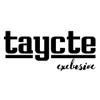On February 25, First Lady Michelle Obama and U.S. Department of Agriculture Secretary Tom Vilsack announced proposed guidelines for local school wellness policies. The proposed guidelines would ensure that foods and beverages marketed to children in schools are consistent with the recently-released Smart Snacks in School standards.
Compliance centers around 4 key restrictions.
-
Age-specific portion size: Elementary school children are only to be given 8 ounces of beverages allowed, including water, while middle and high schools may sell up to 12-ounce portions. The standards for high schools limit the maximum container size to 12-ounces for lower calorie beverages and 20 ounces for calorie-free beverages. The drinks have to have no more than 5 calories per ounce to qualify as "lower calorie beverages."
-
The skinny on milk: Not all milk is created equal according to the new guidelines. While nonfat milk (or nondairy versions of milk) can be flavored or plain, low fat milk is only allowed in unflavored forms. In other words, it is permissible to sell chocolate flavored skim milk, but not chocolate flavored low fat milk.
-
Fruit and vegetable juices: Even though fruit juice is naturally high in sugar, the regulation allows for the sales of 100% fruit juice, both full-strength and diluted with water. It can also be made to resemble soda with the addition of carbonation, so long as there are no added sweeteners. The same goes for vegetable juices.
-
Caffeine ban: The regulations bar caffeinated drinks for kids from elementary through middle school.
Embracing the school standards
The American Beverage Association declared its full support for the new school policy in a press release on Monday. ABA President and CEO Susan Neely declared that the industry has voluntarily complied with "national School Beverage Guidelines, which removed full-calorie soft drinks, cut beverage calories in schools nationwide by 90 percent, and set the stage for the USDA's regulations that take effect in schools this July."
Possible directions for the beverage industry
The beverage industry can work the regulations to its advantage by packaging drinks according to the regulations, with the specified portions sizes, and marketing them accordingly. For example, it can make the same drinks in 12- and 8-ounce containers with labels touting “approved size for middle school” or “approved size for grades 1-5.”

The industry may also want to focus on the high school market. While regular soda would be banned from all schools due to its sugar content and calories, diet soda drinks are allowed for high school students. The fact that caffeine isn't restricted for them also opens up the possibility of marketing coffee and tea. So long as the flavors sold comply with the restrictions on sugar and excess calories, even caffeinated versions of these drinks should still be allowed for sale in high schools.
Would you like to see more food news like this in your inbox on a daily basis? Subscribe to our Food Dive email newsletter! You may also want to read Food Dive's 5 favorite food certifications and labels.













